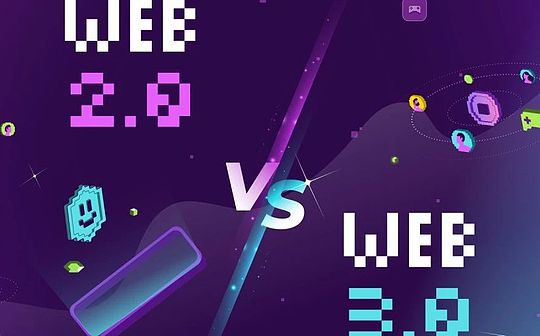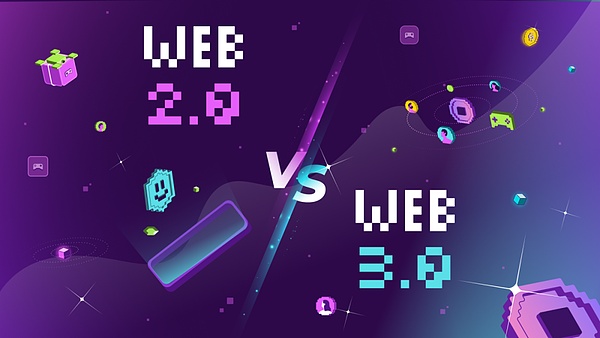
Source: GMG Labs
The birth of Gamefi is a revolutionary change, moving from traditional Web2 games to an innovative Web3 game world.This change is not only an upgrade of technology, but also a reshaping of how gamers interact with digital entertainment.
In the age of Web2 gaming, games run on centralized servers controlled by developers and publishers.Under this architecture, assets in the game (such as skins, weapons or character enhancement props) are completely developed and managed by the game creator, and are basically unable to be transferred or traded outside the game ecosystem, greatly limiting the ownership of playersand asset value.In addition, the currency model in Web2 games often relies on microtransactions, subscription fees or advertising revenue, which allows game companies to gain asymmetric benefits.
Web3 games have brought a paradigm change to the game industry through the decentralized characteristics of blockchain technology.One of the core features of Web3 games is to give players digital ownership of in-game assets through non-fungible tokens (NFTs).Unlike traditional Web2 game assets, the emergence of NFT allows players to truly own these assets, allowing users to trade freely on different games and platforms, converting the invested time and resources into real-world value.
Web3 games also utilize the decentralized capabilities of blockchain to improve the transparency and security of the game, eliminate intermediaries, and reduce the risk of fraud.At the same time, Web3 games generally adopt the “Play-to-Earn” model, allowing players to earn digital assets by participating in the game, realizing the democratization of the game economy.This model allows players’ participation and contribution to get direct economic returns, and the combined financial attributes open up a new source of income for players.
These profound differences between Web2 and Web3 games are significant.Web3 games are expected to completely change the gaming experience by advocating decentralization, introducing NFTs to realize true ownership of digital assets and innovative monetization models, making it feel a more fair and transparent atmosphere to gamers around the world.

Business model
From the perspective of business model, Web3 games can be regarded as a form of Web2 games moving towards the future.Through its centralized capabilities, Web2 creates economies of scale, reducing the marginal costs of production and consumption, thus serving the vast user group with extremely high cost-effectiveness.Therefore, while users enjoy convenience in Web2, they also pay the value of production and consumption – as a middleman, the platform controls traffic business by setting rules, and users must obey these rules before they can participate.
In comparison, based on the centralization of Web2, Web3 games try to achieve the return of asset ownership through transparent and public servers.In Web3, both user production and consumption behaviors are associated with their identity—that is, wallets.Not only funds, but other related values of users are also owned by users.The platform only provides a fair and transparent choice, and users selectively participate by identifying the platform’s rules.This pattern is fundamentally different from Web2.
User value dimension
From the perspective of user value, in addition to providing financial services, Web2 games or platforms focus more on meeting users’ social needs, respecting needs and self-realization needs.In other words, most Web2 services are not limited to monetary interests, but are more focused on the psychological needs of users.In Web3, users’ main motivation is often to make profits. They first focus on whether there is an opportunity to gain profits, and then consider other factors.Of course, as the number of users increases, the added value of the Web3 platform will gradually exceed the pure economic interests, thereby realizing the true return of user property rights, similar to the user experience of Web2.
Another comparison example is that Web2 games can provide users with a sense of superiority in product use and meet their leisure needs, which is relatively scarce in Web3.A sense of superiority often stems from a broader user base, sharing similar ideologies and shared recognition behaviors.However, while Web3 products can provide a similar sense of superiority in a particular niche, it is still relatively difficult to achieve this among a wider group of Internet users.
You can see the difference between Web2 and Web3 in the current form from a simple product formula:
Product Value = Functional Value + Emotional Value + Asset Value
Web3 is naturally suitable for providing liquidity due to its blockchain transparency, and the financial field is the product form that needs liquidity the most.Therefore, the financial attributes of Web3 will be developed first and mainly provide asset value.In the future, Web3 will gradually increase the supply of functional and emotional value, which means that Web3 will gradually evolve into an evolutionary version of Web2, just as digital currency is the evolution of the traditional financial system.With the expansion of user groups and diversification of needs, Web3 will continue to grow and be able to meet a wider range of user needs.
Product design dimensions
In Web2 games, the business model, product functions and operation strategies are actually relatively fixed. The most commonly used model is to “buy volume with money” as the core, and then convert it into platform revenue after attracting user traffic.In this mode, the distance between the platform and the user is relatively far, and the user is often in a relatively passive position, while the platform is in a dominant position.
Over time, the business model and operational methods of Web3 are still being explored and changed.Almost every once in a while, new concepts and gameplay appear, such as Serverfi, which has been discussed recently (players can be allowed to combine their in-game assets to gain server autonomy; players who are constantly rewarded with high retention., providing targeted rewards for high-retention players, maintaining the vitality of digital currency and the healthy game ecosystem. Compared to P2E’s game making money, the concept of ServerFi is more like the game itself that can make money), and in the process of changing, we strive to find stability andDeterminism.Compared with Web2 games, Web3 pays more attention to the operation of users and communities.It is necessary to deeply understand user needs and even put yourself in the position of users. This becomes the key to creating successful products and gaining a good reputation.Only with the in-depth participation of users and the community can Web3 games achieve better development.
The differences between Web2 and Web3 games are not only reflected in the technical level, but also show completely different concepts in multiple dimensions such as business model, user value and product design.The centralized nature of Web2 games allows the platform to control the rules of the game and user relationships, while Web3 gives users greater rights and participation through decentralized blockchain technology, allowing players to truly own and control their assets in the game.and value.








